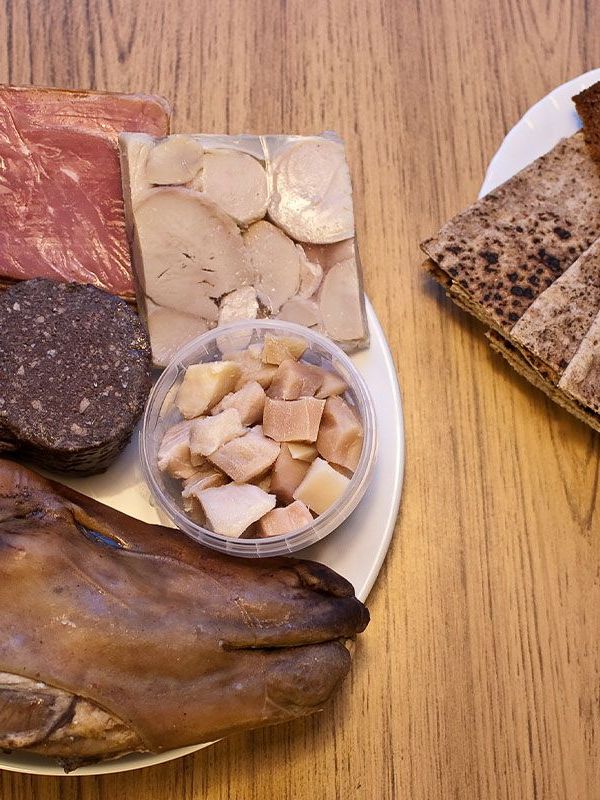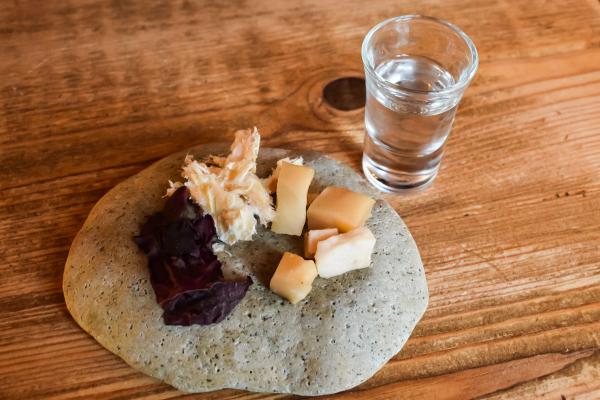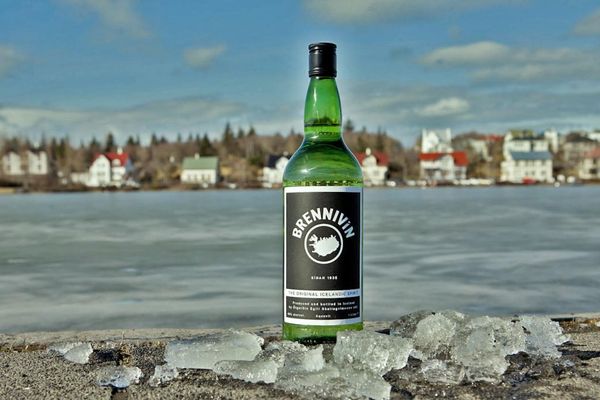
Winter Celebration: Þorrablót Festivities in Iceland
Every year from mid-January to mid-February Icelanders gathers together to celebrate Thorrablot. A mid-winter festival that showcases traditional Iceland food followed by dancing the night away.
Every year from mid-January to mid-February gathers together to celebrate Thorrablot. A mid-winter festival that showcases traditional Iceland food followed by dancing the night away. This unique celebration is known for its bizarre feast and Viking-style drinks. It is probably the only festival in the world that prides itself on serving rotten meats. But, Icelanders are all about it! Thorrablot is truly a time to eat, drink and be merry with the ones you love. We are going to dive into what the festival is and how you can party like a Viking at this Icelandic event.
What is Thorrablot?
Named for the month of Þorri, which is a historical Icelandic blót, is Thorrablot. Back in 1873, it was a sacrificial festival that always took place in winter. On the first Friday after January 19th or the 13th week of winter. It was offered to original pagan gods. Then during the Christianization of Iceland, it was eliminated. Later making its comeback in the 19th century as a celebration during mid-winter.
Thorrablot gained popularity back in the 1960s when restaurants started showcasing different dishes on their menus. The National Museum of Iceland also showcased Þorramatur. Which is the platter of traditional Icelandic food consumed on Thorrablot. Then over time, it became more and more popular, becoming a celebration of Iceland and its Vikings. Today the festival starts with a huge dinner that is accompanied by speeches and poems. It later ends with a huge party that sometimes goes into the early hours of the morning. You can expect anywhere from two hundred to three hundred people at some of the Thorrablot parties.
Food & Drinks
The most extraordinary and weird part of the festival is the food and even the drinks. The dishes are meant to be completely unusual because they come from old traditions. So let’s go into detail about what they are and how they taste. Full disclosure, some may be a bit disturbing but somehow still delicious.
Hákarl
Nothing says a festival like some rotten shark meat for dinner! Which is exactly what Hákarl is. The shark goes through a fermentation process that dries the fish out. The sharks normally come from Greenland and are mostly protected from hunting. They are normally never caught intentionally, only accidentally. The taste of the shark is very fishy as it is high in ammonia. Hákarl is a delicacy in Iceland and it is pretty delicious. It is served in smaller blocks or diced squares. Even though the odor can be intense at times, it is known to taste better than it smells.

Svið
What accompanies a rotten shark? Well, a boiled Sheep's Head of course. Svið is just that. The head of a sheep is considered an unusual dish in Iceland, but also a favorite. It was discovered to be good when old settlers would refuse to waste any part of the sheep. The head surprisingly has a lot of distinct flavors too. The cheek is known to be the savory and meatiest part of the sheep. The tongue is also eaten and provides a chunk of muscle. You must finish the sheep's head by popping the eyeball in your mouth. Icelanders even recommend squeezing it in between your teeth. Yum! Svið is commonly served with potatoes and turnips, making it a hearty Thorrablot meal.

Blóðmör
Get ready to try Iceland's famous blood pudding dish, Blóðmör. It is made by mixing different animal parts that you wouldn’t normally want to eat. This includes the blood and stomach lining, primarily from a sheep. It is also known as a blood sausage since it has the same texture. It can be used as a side dish or appetizer during Thorrablot. You can even pair it with your eggs the morning after the festival, making it popular breakfast meat.

Súrsaðir Hrútspungar
Don’t forget your side of ram testicles when filling up your Thorrablot dinner plate. First, they are washed and boiled to ensure they are in top-notch shape for you. They are also cured with lactic acid. Once they are cleaned, they are pressed into molds so Súrsaðir Hrútspungar can be sliced. The finished product is similar to a loaf of bread. The testicles are even pickled for months before serving, providing a sour flavor. These ram testicles are an absolute winter delicacy in Iceland. Almost always making an appearance at Thorrablot.
Brennivin
When a drink is also known as Black Death, it may be a bit concerning to try. But, it is the top consumed drink at Thorrablot. This local favorite drink resembles pure Icelandic water with a flavor of caraway. Caraway is a spice that grows wild all over Iceland all year long. The spice is combined with fermented potatoes, creating Black Death. It is a very strong drink that is sipped and not chugged. You will spot Icelanders sipping this throughout the night during this mid-winter festival.

The Party
After dinner, and a few glasses of black death, it is time to keep the party going. Normally through the night into the early hours of the morning. This includes traditional songs such as "Ólafur liljurós" an Icelandic folk song that dates back to the 14th century. Group games and storytelling sessions are other activities you can expect at Thorrablot. You have to end your celebration with some Icelandic dancing of the dead known as Vikivaki. This is an old ring dance from the middle ages.
Is this bizarre and amazing festival intriguing you? You can learn more by checking out our episode of Iceland Is Weird But So Great which shows you Thorrablot firsthand. You can see what the testicles, sheep head, and rotten shark look like. As well as the reaction of the locals eating it!
Conclusion
As you journey through the captivating history and cultural tapestry of Iceland, one symbol stands out prominently: the Iceland flag. Its distinctive blue and white design, adorned with a cross representing the nation's Christian heritage, serves as a proud emblem of Icelandic identity. Beyond its aesthetic appeal, the flag holds profound significance, reflecting the resilience and unity of the Icelandic people. To delve deeper into the history and symbolism of the Iceland flag, explore Go Car Rental's comprehensive guide: Icelandic Flag.
